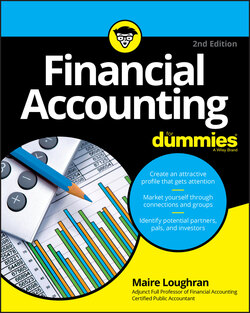Читать книгу Financial Accounting For Dummies - Maire Loughran - Страница 64
Learning about recognition options
ОглавлениеThe big deal about revenue and cost recognition for your financial accounting course is the matching principle (see Chapter 5). Generally accepted accounting principles (GAAP) dictates you must associate all recognized revenue both earned and realizable with the expenses you incur to product that revenue. Chapter 10 gives you the revenue side of the matching principle. Chapters 12 and 13 walk you through important steps to match inventory and big asset purchases to revenue.
However, as your financial accounting textbook will point out, in some instances, you don’t have to fully utilize the matching principle. For example, many small businesses use the cash method of accounting (see Chapter 6). Under the cash method, revenue is recorded when it is received, and expenses are recorded when they are paid.
The cash method of accounting is especially suited to service businesses, which don’t sell a tangible product. Rather, a service company provides a knowledge-based work product and purchasing inventory for sale (see Chapter 13) and is not a common part of doing business as a service. Examples of this type of business are dentists, accountants, and lawyers.
To add to the excitement, some businesses have specialized generally accepted accounting procedures (GAAP). Classroom discussions about cash based and specialty GAAP is always a lively in my financial accounting courses.
The airline industry is one example of specialized GAAP. While there are many, two interesting items of airline specialty GAAP are recognition of income and accounting for landing and take-off slots. If a passenger fails to use a nonrefundable ticket, airlines can consider the flight closed the next day and record the revenue for this unused ticket. Exchangeable tickets not used within a certain time period set by the airlines are similarly booked as gross receipts. To figure a reasonable time period, the airline looks to historic data reflecting how long in the past it took passengers to reticket their exchangeable flights. This time period is normally between 6 to 24 months, depending on the airlines and their experience in the past.
Landing and take-off slots are the areas owned by airlines to enter and exit airports can be one of their largest assets on the balance sheet. They are accounted for as intangible assets (see Chapter 7), which means their cost is initially taken to the balance sheet and then amortized, which means the cost is transferred to the income statement using an allowable amortization method (see Chapter 7).
